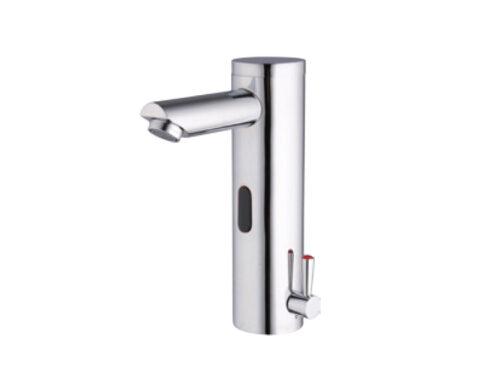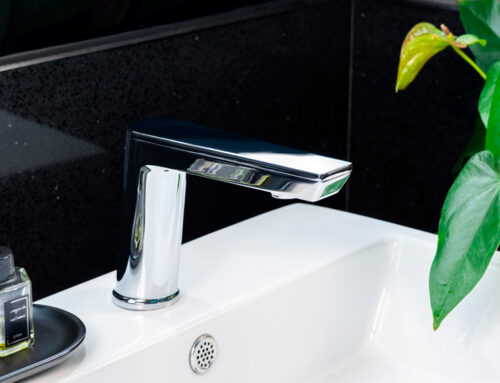Automatic toilet flushers are becoming more popular because they eliminate the need to physically touch the toilet after we’ve used it. Automatic toilets have traditionally been found in public bathrooms, but they are rapidly making their way into homes. They are now more beneficial than ever in this age of the Covid-19 pandemic, and we all want to avoid physical contact with others at all costs.
But just like any other fixture in the bathroom, even these fancy toilets can malfunction. If the automatic toilet fails to flush, usually this failure is caused by a blockage of the automatic sensor.
If the automatic toilet won’t flush, troubleshooting usually involves locating and removing any obstructions from the automatic sensor attached to the toilet tank. If the failure is not caused by a blockage, additional steps, such as replacing parts, are required.
But before diagnosing an issue affecting an automatic toilet, it’s important to first understand how an automatic toilet works.
How Automatic Toilets Work
Auto-sensing toilets have an infrared sensor that can detect someone approaching the toilet, sitting on the toilet, or standing up after using the toilet. The sensor measures whether there is enough movement to warrant a full flush cycle.
Why We Need an Automatic Toilet for Bathroom
Automatic toilet flushers are great for people with health complications who have difficulty reaching the flush button. Parents with young children who don’t yet have access to a manual flush button or handle will also benefit from installing a sensor toilet. Automatic sensor toilets make toileting easier for everyone!
It’s very common for bacteria and germs to stick to hands after going to the toilet. This is why it is so important to wash hands after using the toilet. With a touch-free flush mechanism, we don’t need to touch the toilet. This means less contact with germs and bacteria that may be left on the toilet handle from previous toilet visits.
What could cause the automatic toilet to malfunction and How to Solve it?
Here are some of the most common problems and solutions to automatic toilet malfunctions:
Toilet door self-induction phenomenon
Possible reasons: In the case of some smooth stainless steel doors, it may cause the door to sense itself, and it cannot be used normally.
Solution: Use an angled sensor to effectively solve the problem. The emission angle is the vertical panel, about 15 degrees downward.
No induction
Possible reasons: The installation height is too low or too high, which may lead to insensitive induction
Solution: Normal installation height, the center point of the induction panel is about 40-50cm above the ground, and the induction panel is located in the center of the squat pit
Continuous water flow
possible reason:
1. Check whether there are sand and gravel impurities in the solenoid valve body, which are stuck on the solenoid valve piston, resulting in continuous water flow.
2. Solenoid valve coil assembly built-in moving iron core and diaphragm are blocked by sediment and impurities, resulting in the direct flow of water.
3. Check whether each connector is tight and in good contact, and check whether there is dirt on the sensor window.
Solution: add a filter screen at the water inlet end of the solenoid valve, with a mesh number of about 30, which can effectively prevent large particles of impurities from entering the flow channel and cannot pass through the piston, causing the piston to get stuck and unable to shut off the water.
No water flow
possible reason:
Check whether the water supply valve is open, and check the flow regulator of the solenoid valve. If it is closed, please open the water supply valve and the flow regulator of the solenoid valve.
In the case of no flushing, no indicator flashes during use (the red indicator flashes once after 3-4 seconds of sensing), or the indicator flashes continuously, please check or replace the power supply (power adapter or battery)
Check whether the sensor module is working normally. Under normal working conditions, when a person enters the sensing range, the indicator light will flash once after 3-4 seconds, indicating that the sensor is working, and will flush water after the person leaves 3-4 seconds.
Low water flow
possible reason:
Check whether the main water inlet pipe diameter is ranging 45-50mm.
Check whether the water supply valve is fully opened, measure whether the water supply pressure is normal (the minimum pressure should be greater than 0.14Mpa), and check whether the flow regulator is fully opened
Check whether the water supply pipeline and filter system are blocked by sand and gravel debris
Open the “solenoid valve cover” with a wrench, take out the “solenoid valve piston”, and check whether the “diaphragm” is deformed, damaged, or cracked; if so, replace it with a new “solenoid valve piston”.



